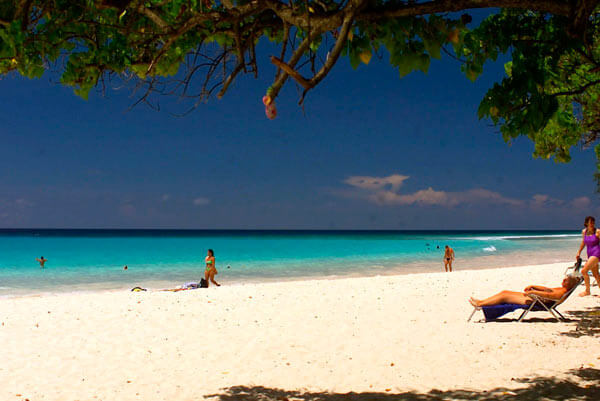Could Jamaica be the next Caribbean trade bloc member state to find commercial quantities of oil and gas?
Clearly encouraged by Guyana’s humungous oil and gas find of 2015, the island is on a frantic search to find and produce its own supplies and lessen dependence on foreign oil imports, including those from Venezuela under the decade-old plus Petro Caribe scheme.
London-based Tullow Oil was just about getting ready to throw in the towel and pack it in recently when local fishermen pointed them to oil seeps and slicks off the south coast. The company had found no significant traces of oil and gas despite investing millions on seismic work and after spending months at sea exploring its offshore concession.
At first exploration teams from Tullow dismissed the idea that those slicks could be anything but live oil, but those should by right, be more associated with waste from cruise and other vessels on the ocean.
But the fishermen insisted that the company should have a look and once its experts did, they quickly determined that the slicks were not waste oil from ships but had apparently been seeping to the surface from the seabed far below.
“At the time, fishermen whom we engage with closely when we are doing our offshore activities said that there were some reports of slicks of oil in the area. Usually, such tips show evidence of refined or ship pollutants. But not that time. In this case, the sample seemed like natural crude oil,” company spokesman Jerome Kelly told the local Gleaner Newspaper.
The encouragement from the oil slick pointed to the company by fishermen, has now prompted Tullow to conduct additional surveys on nearly 500 square miles of additional sea space this month using 2D technology. It is no longer preparing to leave until another time.
“The survey will start in March, and the median length would see it last five to 10 days. The live oil was of a tiny amount, so it doesn’t say how much is underground, nor does it say where that oil has come from, and that is why we are doing the survey,” Kelly said.
Tullow which also has a large concession just off ExxonMobil’s area in Guyana, entered the Jamaican exploration space back in 2014 and quickly mobilized to get going. It has nearly a dozen large blocks and one in relatively shallow water.
Locals are confident oil and gas are offshore. After all Jamaica is not too far from the oil and gas-rich Gulf of Mexico which has particularly helped the US and Mexico to make billions from both on and offshore oil wells. Nearby Cuba has also been exploring in earnest. The Bahamas and Belize have also been trying to up the tempo in this regard.
Jamaican officials say that this round of exploration efforts is the first since the early 80s when nearly a dozen wells were drilled from around 1956 to 1983. One showed promising signs of hydrocarbons.
Current producers in the region include Trinidad with more than 100 years of both exploration and actual production, Suriname which astonishingly found onshore oil while drilling for water in the west near Guyana in the 70s and Barbados which has onshore wells producing a few hundred barrels daily.
The initial Liza 1 group of wells Exxon has drilled offshore Guyana, for example, has titillated the palates of governments in the bloc of 15 nations as many are worried about the fragile tourism industry, the loss of income from duty free trade in the region, the collapse of the banana industry and threats to offshore banking. Oil and gas may be the sector to rescue struggling CARICOM nations. The Liza wells are said to be valued at around $70B.
If Jamaica is getting ready to press the throttle on exploration, so too are Barbados and Grenada, neighboring Trinidad. In recent years, Bajan officials have handed concessions to BHP and Repsol, while Grenada has been engaging MX Oil PLC of Britain amidst opposition complaints about alleged secrecy in dealings with the firm.






















